Life, Death and Coyotes at Evergreen Cemetery
Published as part of an environmental storytelling partnership with the Laboratory for Environmental Narrative Strategies (LENS) at UCLA, with extensive contributions from faculty and MFA students in UCLA’s documentary film program in the Schoolof Theater, Film and Television. The second storyline considers how Los Angeles has inadvertently become a sanctuary city for non-native animal species that are sometimes endangered in their native habitats. Find more Urban Ark stories here.

Evergreen Cemetery, in Boyle Heights, is the oldest cemetery in Los Angeles and one of the largest with over 300,000 graves.

Different sections of the cemetery are home to graves from Los Angeles’ many cultural communities.

The cemetery is also habitat for several coyotes, who are especially active in the early morning.
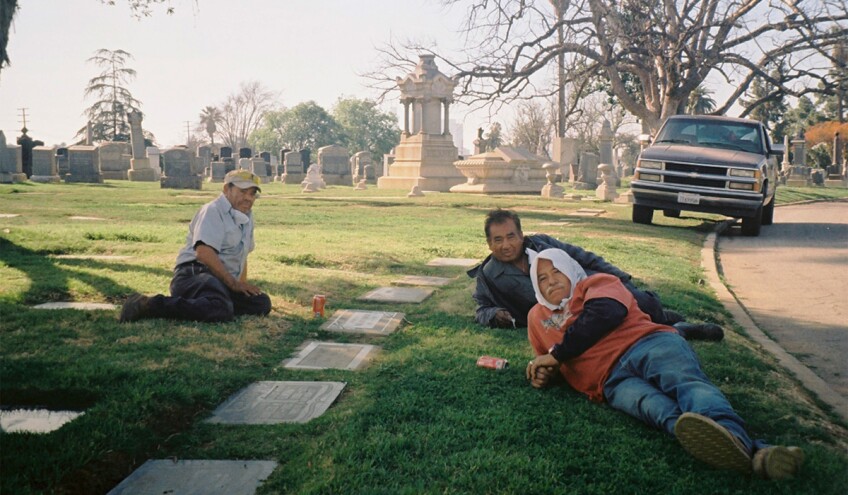
Three of the groundskeepers at Evergreen, Elias, José, and Juan (from left to right), frequently see the coyotes. José, who has worked at the cemetery for 25 years, says the coyotes appeared here about two years ago during a large fire in the surrounding mountains.
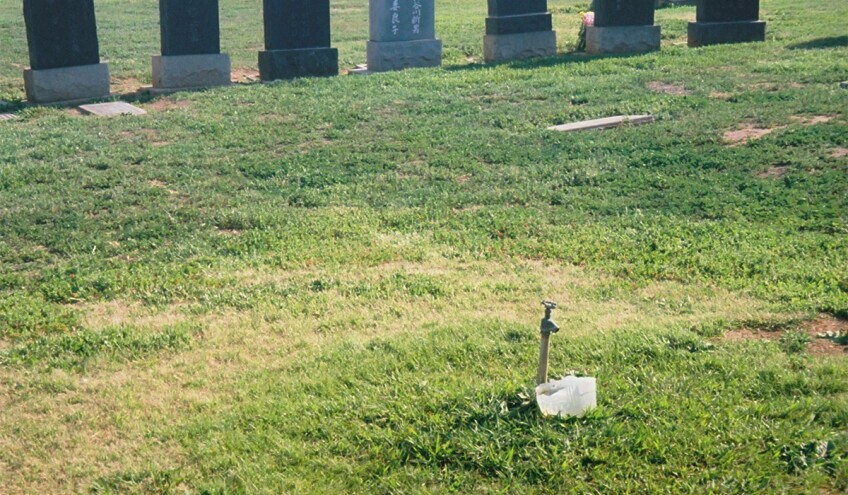
The groundskeepers place small receptacles under the cemetery spigots to catch dripping water, convenient watering holes for the coyotes.

The coyotes use the cemetery and surrounding neighborhood as a hunting ground. This coyote is just returning to the cemetery with a dead cat.
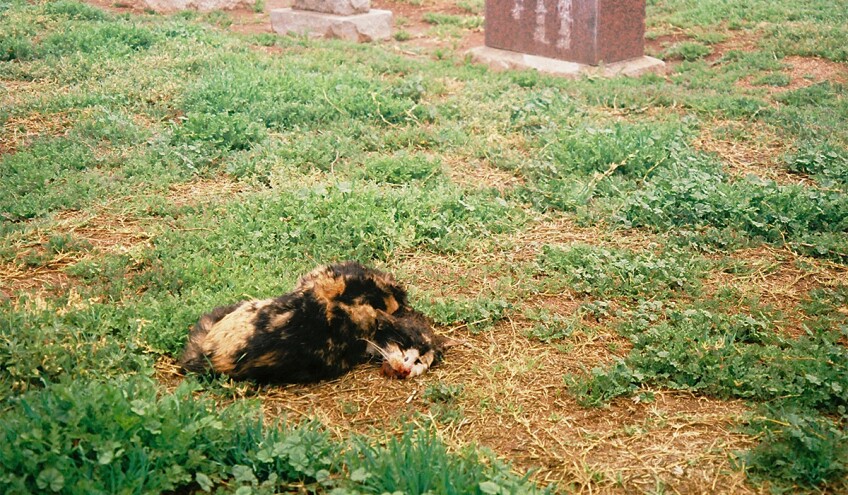
The appearance of the cat’s cadaver suggests that it was caught and killed by the coyote, rather than picked up as roadkill.
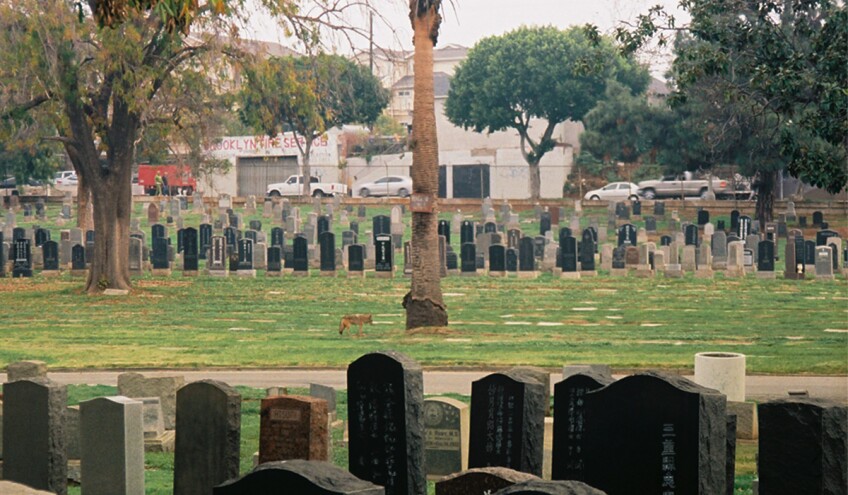
Squirrels, another coyote prey, are sometimes too fast and agile to catch.
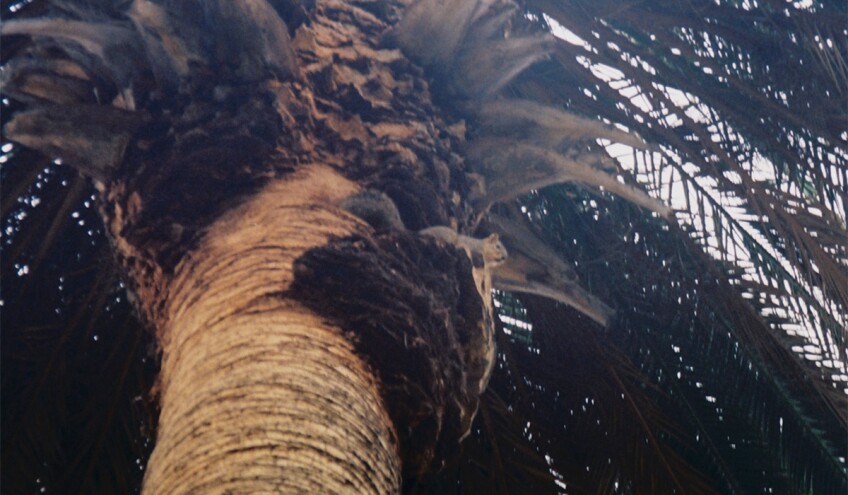
This squirrel, having escaped from a coyote, looks down from the safety of a palm tree at its despondent predator.

Human food left at the cemetery is also quite often eaten by its nonhuman inhabitants.
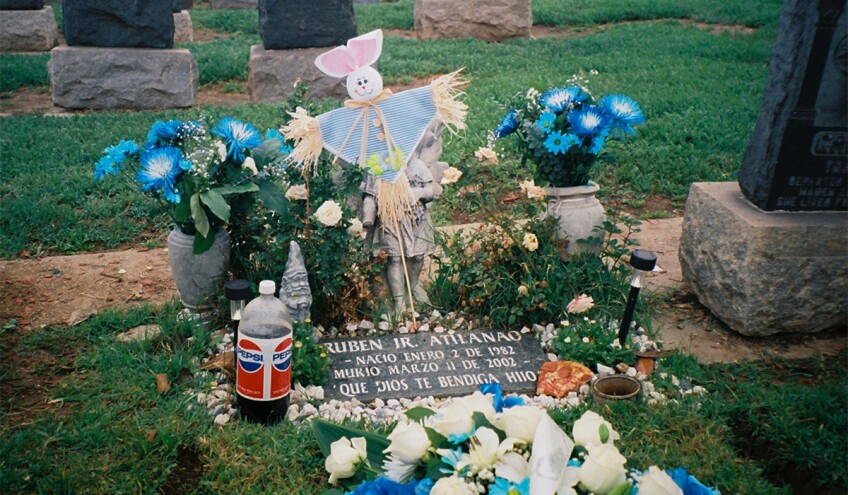
Some of the food offerings that are left for dead loved ones no doubt end up being enjoyed by coyotes.
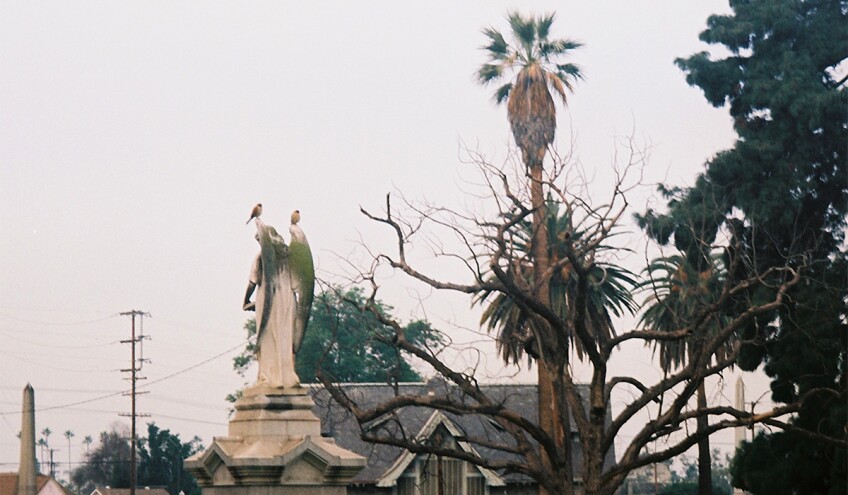
Birds of prey also visit the cemetery as a rich hunting ground. Two American kestrels, the smallest and most common falcon in North America, perch together on the wings of a stone angel.
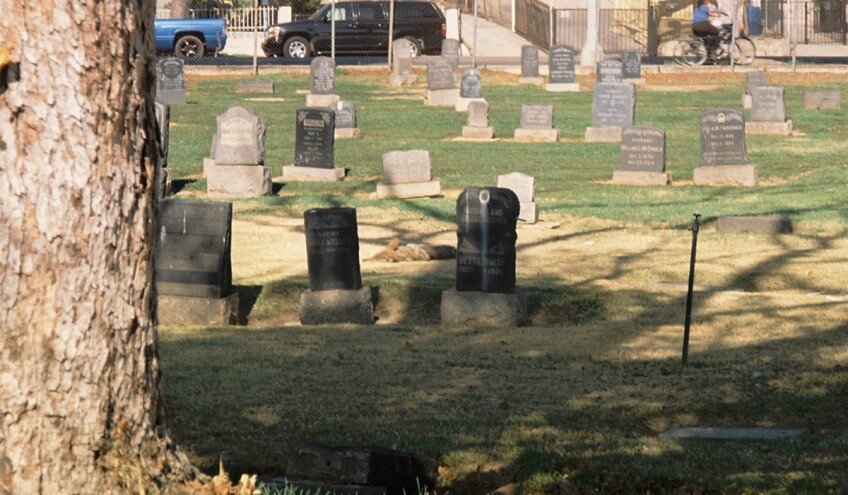
In the late afternoon sun, coyotes often sleep peacefully among the gravestones.
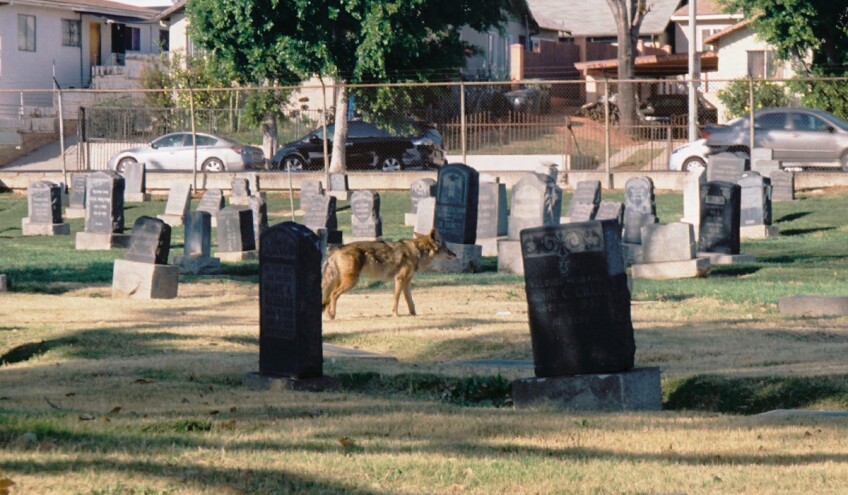
At my approach, this coyote got up and ambled away.

A coyote has dug a den near a grave stone that extends to the space underneath the root of a large nearby tree. The cemetery groundskeepers believe the female coyote is pregnant and will soon deliver a litter, giving birth to new life among the dead.



